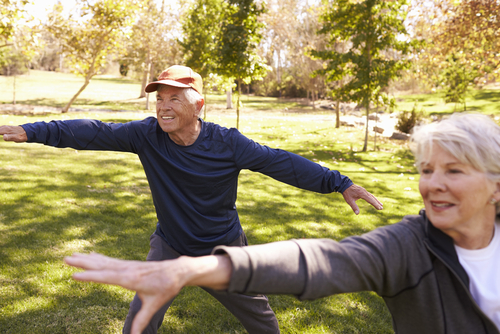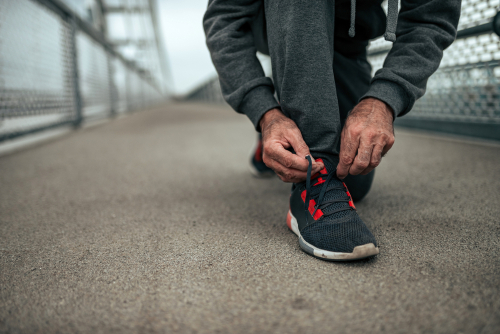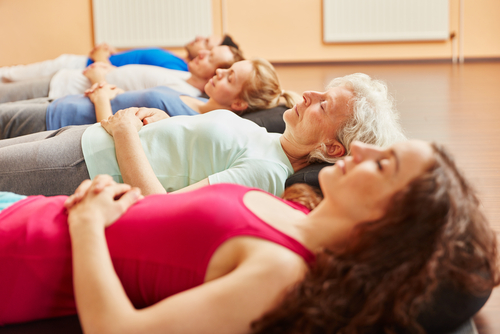The number one cause of injuries and related deaths for seniors in America is falling. That’s a pretty startling statistic. Even more startling is that, according to the Center for Disease Control and Prevention, a senior adult falls every second in the U.S.! What makes seniors so susceptible?
As we age, the body’s systems for maintaining balance and stability become less effective at recognizing our exact body position. We also lose some muscle strength and flexibility, along with mobility. Put all these factors together, and seniors have a higher risk of falls, and they have less ability to stop the fall once it starts. Then, to complete this scenario, seniors are likely to have more serious injuries than younger counterparts once they hit the ground.
So, how can they avoid being one of the statistics? The first step is prevention. Remove any tripping hazards like throw rugs from the home. Remove any obstacles from hallways and frequently used pathways. Have good lighting. Be especially careful in the bath and shower area where wet floors could cause a slip. Install grab bars in the bathroom. Use the railings when going up or down steps. Have a home care services specialist evaluate your home and make suggestions on how to improve safety.
One of the most important proactive things you can do is to add exercises designed to improve balance to your daily routine. A few minutes every day could improve your balance and prevent falls. Core exercises for seniors that strengthen the abdominal and back muscles are essential. Your core muscles keep you upright.

Look into an exercise program designed for seniors called SilverSneakers. Your Medicare Advantage policy may cover the cost. Or take a class in Tai Chi, which requires slow balanced movements. Many seniors prefer water exercise since you can’t get hurt if you lose your balance.
Here are a few exercises to get you started. Remember, wear good athletic shoes and use a mat when you are on the floor. Hold onto the wall or a heavy piece of furniture for safety when you first start to exercise. When you become stronger and more stable, you can eliminate the support. And, of course, before starting any exercise program at any age, talk to your doctor.

- Foot taps. Stand facing a step or low stool. Feet should be hip-width apart. Slowly raise your foot to tap the step and slowly lower your foot to the floor. Do this for 15 to 20 taps. Then repeat with the other foot.
- Single leg stands. Stand straight with feet hip-width apart. Extend arms out to your side from the shoulder, elbows straight. Slowly bend the knee and lift your foot a couple inches off the ground. Hold for 10 to 15 seconds, keeping the torso straight. Slowly lower your foot to the floor and repeat with the opposite foot. Complete five repetitions. This move can be modified to be done from a seated position and still benefit your core muscles.
- The Plank. Lie on your stomach on the floor with your elbows directly under your shoulders and your forearms flat on the floor. Legs should be hip-width apart, wider for better balance. Slowly raise your hips up while looking down at the floor. Your body should be a straight line from your head to your toes. Hold for 30 seconds. If you’ve never done a plank before, you may not be able to complete this move the first time. If this move is too difficult for you, modify the move by keeping your knees on the floor, and your straight line will be from your head to your knees. You can also hold the position as long as you can, rest, and repeat until you reach the 30-second goal. This is a great strength move for your core.

- Deep breathing. Lie on your back with your legs bent at the knees and feet flat on the floor. Place one hand on your abdomen and one hand on your chest. Using only your stomach muscles, inhale deeply and slowly through your nose. You should feel your abdomen rise while your chest remains the same. When you can no longer inhale, tighten your abdominal muscles and push the air out through your mouth. Repeat for one minute. Do this twice a day. This exercise will strengthen deep core muscles and improve lung function. Plus, rhythmic breathing is a great stress reliever.
- Wii Fit. If you have a Wii system and Wii Fit program, get it out! In this system, there is a balance board that you stand or sit on for many of the activities. Shifting your weight results in action on the screen. For instance, while standing on the balance board, shifting your weight to the left will cause the player to move left on the screen. The greater the weight shift, the bigger the turn. It is a great way to improve balance while having fun.
By adding some of these balance exercises to your usual routine and keeping your core strength up, you may lessen your risk of becoming part of the fall statistics.

